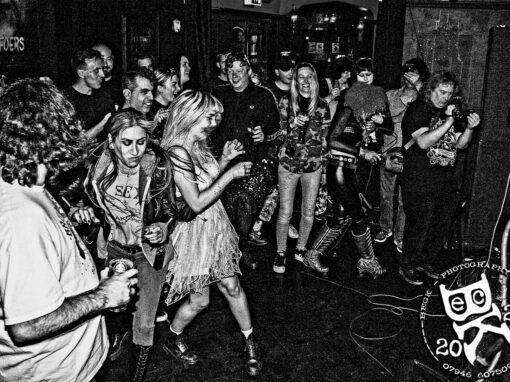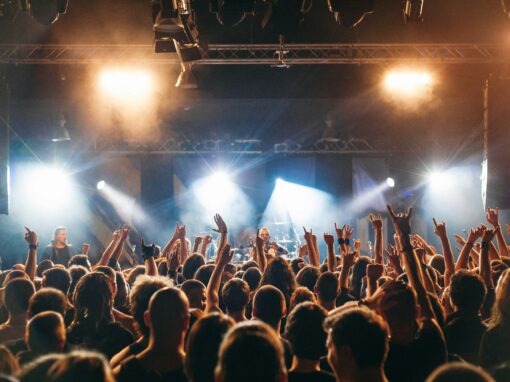Images by UK Gossip TV, iHeartRadioCA and Patou Cornette via WikiMedia Commons
Why do we feel so close to our favourite influencers? Is it because they’re more relatable than Hollywood stars? Are we inspired by their seemingly perfect lives? Or do we just like to feel as though we have another friend?
I spoke to the experts to find out why we feel so connected to these strangers online, and turns out the reasons are more positive than you may think…
Whether they’re vlogging or sharing behind the scenes content, influencers share many aspects of their daily lives. We get to know their coffee orders, personality quirks and even the ins and outs of their makeup routines. It’s no wonder we ultimately feel as though we know them as friends.
The experts refer to this as a parasocial relationship, which explains why ordinary people, like you and I, are so invested in the lives of those we watch through our phone screens – even when most of our favourite stars don’t even know we exist.
Jayson Dibble is an interpersonal relationship researcher who has spent many years studying parasocial relationships. He believes that for the most part, they’re relatively harmless: “People engage in parasocial relationships because it’s fun. They can allow people to meet all kinds of needs, such as to feel less lonely or to feel catharsis.
“When we watch media personalities on screen, it emulates a real-life encounter with them. For example, when they look straight into the camera, it’s like they’re directly addressing us as viewers, even if we aren’t actually interacting with one another. Feeling like we are having an actual conversation with these stars forms a bond between viewers and creators.”
Essentially, we like influencers because when they’re sharing the ins and outs of their daily lives with us, it creates an illusion of genuine connection.
David Giles, a reader in media psychology explained that more intimate vlogging styles and sharing personal moments online has encouraged these connections to form:
“There’s a nature of online fame where media figures draw their audiences into their domestic environment. Whether this is through vlogging in their bedroom, or bringing their family, friends and even pets into the public eye, it sets up a sense of intimacy that encourages parasocial relationships. Online personalities are often more available and reciprocal than traditional celebrities, which is why our bonds to them can feel stronger.”
Arguably, the American influencer, vlogger and podcaster Emma Chamberlain has gathered over 12 million YouTube subscribers because she produces this type of intimate and authentic content. By sharing childhood memories, her mental health struggles and even what her apartment looks like online, her open and honest vibe is likely why people find her relatable and feel as though they’re friends with her… or would be given the chance.
A heavy media consumer, Julia Gallo, says she does in fact find influencers more relatable than celebrities, because as she describes, they’re ‘more human’.
“I don’t like it when stars are heavily media trained because it makes them seem less genuine. Instead I definitely prefer watching more laid-back interviews or getting a look behind the scenes, because the stars always seem more natural and show more personality that way. They aren’t an influencer, but Reneé Rapp comes to mind since she often slips up and says things that she isn’t supposed to say.”
But regardless of the F-bombs dropped during interviews, the American singer-songwriter and actress’ cheeky personality is actually quite popular. The Business Insider wrote a piece titled ‘I hope Reneé Rapp never succumbs to media training’ where they said “It’s refreshing to see a famous person be so unfiltered.”
Following interactions with celebrities, both in person and online, Julia shared that influencers do in fact appear more approachable:
“Sometimes we put stars on such high pedestals that they almost don’t feel real. When I met Taylor Lautner, from the Twilight movies, I was star-struck and almost couldn’t believe he was actually real, never mind stood right in front of me. I was so nervous that my heart started racing and I struggled to even speak to him whereas with my favourite influencers, I’d definitely feel more comfortable.”
Influencers seem to achieve the perfect balance between being relatable as well as inspirational. David explained that we flock to influencers because these people are often more interesting, glamorous and exciting than people we know in real life: “Although we might love our family, friends and colleagues, they often don’t inspire us in the ways that media personalities do.”
Research suggests this is true and that people do in fact find influencers inspiring. A 2019 survey by LEGO found that children between the ages of 8 and 12 are more likely to aspire to be a YouTuber than an astronaut.
It’s no surprise people are changing the ways they dress, products they buy and even their lifestyle choices to be more like those they see online. Which raises the question: Have influencers got too influential?
Shaping everything from fashion trends to consumer habits, ‘The Molly Mae effect’ is now a term used online to describe the countless ways she has influenced some of her 8.4 million Instagram followers. A leather jacket that she advertised for Zara was soon flying off the shelves and is now a wardrobe staple amongst her fans.
View this post on Instagram
After her own clothing brand, ‘Maebe’, sold out in just 24 minutes, it’s no surprise brands like PrettyLittleThing and Tarte Cosmetics use influencer endorsement to advertise.
But, Jayson says that copying influencer’s outfits and following trends isn’t necessarily a bad thing: “Taking inspiration from our role-models, whether online, offline, parasocial or not, is a natural part of learning about ourselves and helps us to fit in.”
“In some cases, parasocial relationships can help us to fit in through fandoms too, like how the Taylor Swift fans call themselves ‘The Swifties’. This just goes to show that we don’t only view media personalities as our friends, but we can make actual friends within fandoms too.”
However, despite the sense of community and friendship that the ‘Swiftie’ fandom brings, Julia added that Taylor Swift is sometimes so famous that it is hard to relate to her: “I’m a Swiftie myself but I definitely prefer to connect with other fans and influencers who make Taylor Swift- related content.
“I follow lots of fan accounts for various celebrities, but my favourite influencers are definitely a friendship group of four girls called Stella, Lucy, Paige and Miyah. They all have quite big TikTok platforms where they post about their experiences fangirling over the many popstars that I idolise too. I just feel like I can really relate to them because we have such similar interests and after all they’re just ordinary girls like me.
“I also love that they spread the message that you shouldn’t feel silly for being a fangirl, even though we are sometimes seen as crazy and hysterical. They inspire me to be unapologetically myself and even made me feel more confident since I used to be really shy.”
This just goes to show that influencers and celebrities alike offer far more than just posed photos on perfectly curated Instagram feeds. Whether our favourite creators provide comfort, inspiration or just a friendly face on our screens, many social media stars have built trusted relationships with us – blurring the lines between creator and friend.
Perhaps they aren’t the shallow and superficial selfie-takers they’re sometimes made out to be after all?
For more stories on Social Media click here: https://illuminatedmag.co.uk/social-media/






